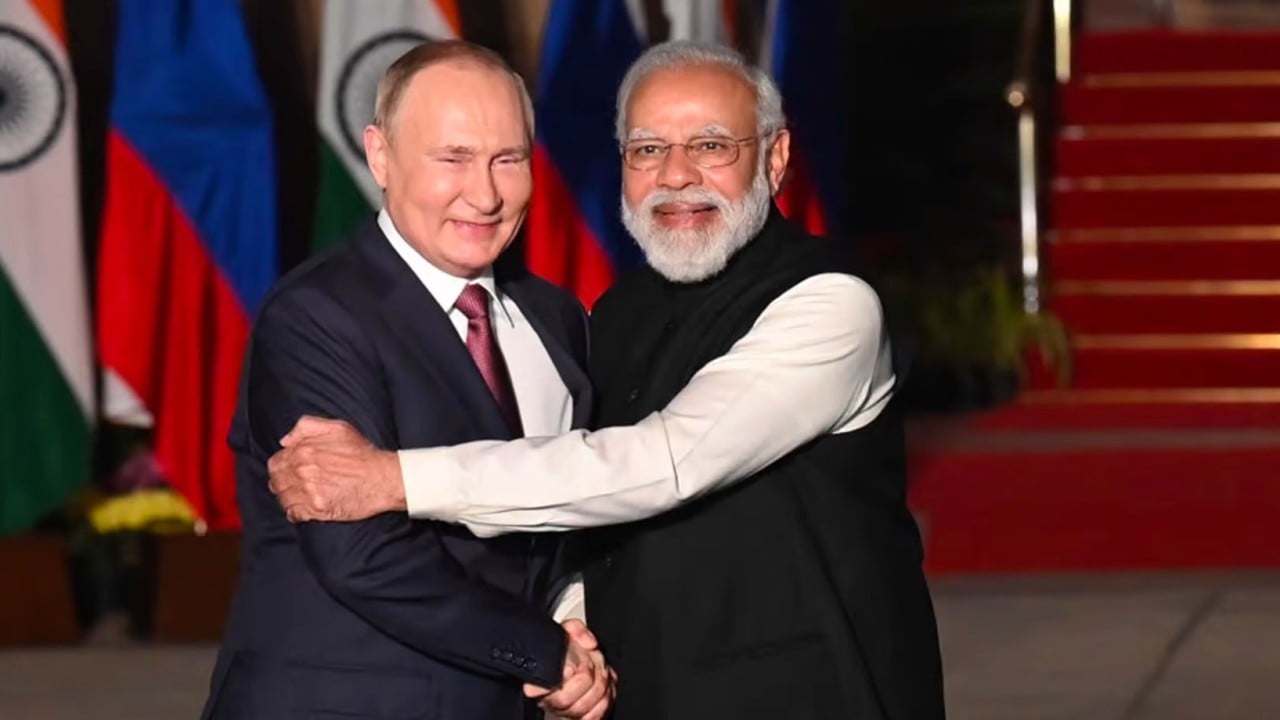
How rising India’s Quad role is helping it find its place among global powers
- New Delhi is moving quickly to take on more multipolar responsibilities as it grows into a diplomatic and economic force within Asia and beyond
- This shift from a neutral position is largely due to China’s growing influence, with relations plagued by mistrust over armed conflict along their shared borders
India is on a diplomatic roll. New Delhi has been signing agreements left and right with a host of major international partners in what appears to be Prime Minister Narendra Modi’s calculated attempt to secure a place among global power brokers. By all accounts, it’s working.
Their joint statement read in part, “The Quad is committed to cooperation with partners in the region who share the vision of a free and open Indo-Pacific.” This means not only support for the international rules-based system, including the UN Convention on the Law of the Sea, but more specifically the East and South China seas.
Such a far-reaching declaration marks a significant departure from India’s non-aligned positioning during the Cold War. New Delhi deftly managed to court both the US and the Soviet Union at the time as the two superpowers battled for spheres of influence.
In the 2021 financial year, even with the limiting effects of the Covid-19 outbreak, the US granted more than 250,000 non-immigrant visas to Indian nationals. That is more than double the number granted to Chinese.
In the past two months, India signed an investment incentive agreement with the US International Development Corporation, the Australia-India Economic Cooperation and Trade Agreement and a raft of agreements with Germany, including a US$10.5 billion green development deal.
In its midyear world economic outlook, Morgan Stanley has India defying the global slowdown trend with a buoyant 7.4 per cent growth, compared to China’s 4.2 per cent and the US at 2.6 per cent. Even among consensus estimates, India outpaces both developed and developing countries for 2022 and 2023.
India also has little by way of historical baggage in its dealings with greater Asia. It has mainly played a subcontinental role with Bangladesh, Sri Lanka and Pakistan, but it has not, for example, expanded militarily or held any designs on broader regional dominance.
India, however, has not been a leader in broader financial bailouts far from its shores. China, which has invested heavily in Sri Lankan infrastructure, has also offered the country a US$1.5 billion currency swap to help it repay its obligations.

That parochial influence could hinder New Delhi from taking on broader, more difficult leadership roles. India also suffers from some of the worst poverty on the planet, and climate change is likely to make parts of the country uninhabitable this century.
These challenges might prove too much of a drag on India’s ambitions to enlarge its reach. That is why engagement with the Quad is so significant. It offers a way to ease into the complexities of multipolar responsibilities without the need to shoulder heavy burdens alone.
India is taking a more active role in regional and international affairs, marking another pole in the emerging multipolar world. As China’s rise has shown, making room at the table doesn’t come easy.
While some might view this as an unwelcome change in the status quo, Asia is better served by a balance of multiple powers committed to a rule-of-law-based international system and the security it enables. Countries will need to adapt and embrace the rise of yet another major player in Asia on a coequal footing to ensure a peaceful and prosperous 21st century.
Brian P. Klein is founder of RidgePoint | Global, a strategic advisory firm. He is a former US diplomat



